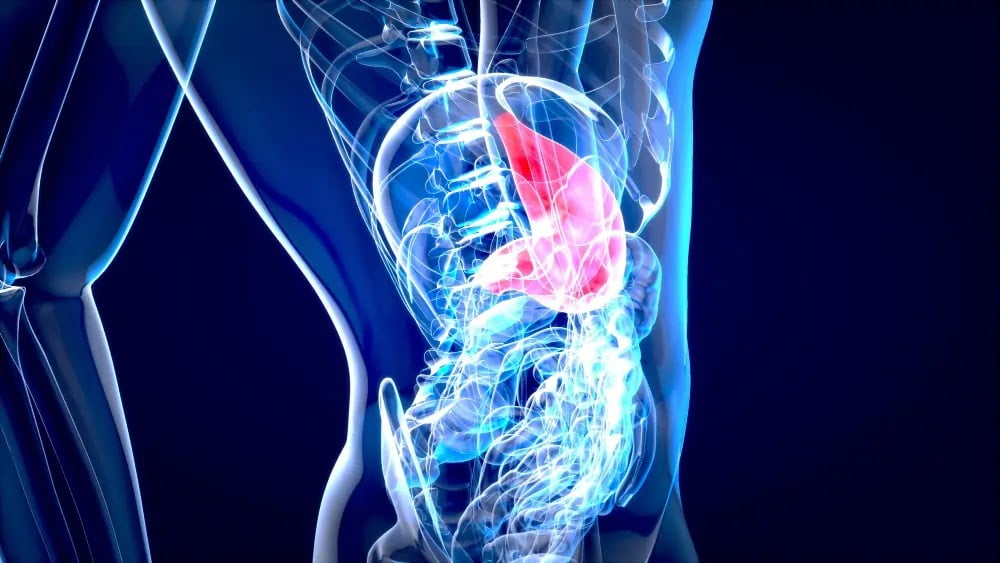Childhood obesity is a grave concern affecting millions of children and adolescents globally. Its detrimental impact stretches across physical, mental, and social well-being. In this article, we uncover five lesser-known facts about childhood obesity and its causes that are both alarming and enlightening.
Fact 1: Childhood Obesity Has Soared by Threefold Since 1975
The World Health Organization (WHO) reveals that the prevalence of obesity among children and adolescents aged 5-19 skyrocketed from 4% in 1975 to a staggering 11% in 2016. This means that over 340 million youngsters were either overweight or obese in the year 2016. The surge in childhood obesity owes itself predominantly to shifts in dietary habits, physical activity levels, and environmental and societal factors.
Fact 2: Childhood Obesity Disparity Across Different Populations
The impact of childhood obesity varies among children from diverse backgrounds. For instance, in the United States, the prevalence of obesity in children and adolescents aged 2-19 years was substantially higher among Hispanic (26.2%) and non-Hispanic Black (24.8%) children when compared to non-Hispanic White (16.6%) and non-Hispanic Asian (9.0%) children in the years 2017-2020. Additionally, between 2011 and 2014, the prevalence of obesity declined as the level of education among heads of household increased. These inequalities highlight the influence of socioeconomic aspects like income, education, access to healthy food, and exposure to the marketing of unhealthy food on childhood obesity.
Fact 3: Childhood Obesity Can Lead to Severe Health Complications
Children grappling with obesity face a higher risk of developing various health problems, including high blood pressure, high cholesterol, type 2 diabetes, respiratory issues, joint problems, and fatty liver disease. These conditions, in turn, increase the likelihood of heart disease, stroke, kidney failure, and certain cancers in adulthood. Furthermore, childhood obesity can hinder growth, bone health, puberty, and brain function.
Fact 4: Childhood Obesity Takes a Toll on Mental and Social Well-being
Psychological and emotional afflictions plague children with obesity, engendering anxiety, depression, low self-esteem, and negative body image. Additionally, they often encounter bullying, discrimination, and societal stigmatization. These factors have detrimental effects on their academic performance, social skills, and overall quality of life.
Fact 5: Childhood Obesity Can Be Prevented and Treated
Thankfully, there is good news amidst the gloom. Childhood obesity is both preventable and treatable through effective interventions. The WHO advocates for a comprehensive approach involving the following actions:
- Promote healthy eating habits, restricting the consumption of sugar, salt, and fat, especially from processed and fast foods.
- Encourage physical activity and reduce sedentary behaviors, such as excessive TV viewing and prolonged video game sessions.
- Support breastfeeding and ensure appropriate complementary feeding for infants and young children.
- Establish supportive environments that facilitate healthy choices, including safe and accessible spaces for physical activity, regulations on the marketing of unhealthy food and beverages, and improved availability and affordability of nutritious food.
- Provide healthcare and education to children and their families, aiding in the prevention, identification, and management of obesity and its complications.
Addressing childhood obesity necessitates the collaboration of various stakeholders, including governments, healthcare professionals, schools, communities, families, and the children themselves. With collective effort, we can help our children achieve a healthy weight and a brighter future.
Combating Childhood Obesity: Understanding the Causes and Taking Action
Numerous factors contribute to its prevalence. Diet, physical activity, genetics, hormones, and environment all play a role in the development of this condition. To address this issue effectively, it is crucial to explore and comprehend the key causes of childhood obesity. By taking a holistic approach and making necessary changes, we can help children achieve a healthier weight and enhance their overall well-being.
Causes of Childhood Obesity
Unhealthy Eating Habits
Children consuming high-calorie, high-fat, and high-sugar foods are at a greater risk of obesity. Foods such as fast food, processed snacks, sweets, and sugary drinks contribute significantly to excessive weight gain.
Lack of Physical Activity
Insufficient engagement in physical activities and prolonged periods of sedentary behaviors are major contributors to childhood obesity. Spending excessive time watching TV, playing video games, or using computers reduces opportunities for exercise and burns fewer calories.
Genetic Factors
Family history can play a role in childhood obesity. Inheriting genes that predispose a child to weight gain can increase their susceptibility to obesity, making it essential to address genetic factors within the overall prevention and treatment strategy.
Hormonal Imbalances
Certain hormonal imbalances, such as thyroid problems, can impact a child’s metabolism and appetite. These imbalances may contribute to difficulties in maintaining a healthy weight.
Environmental Influences
An unhealthy environment can hinder healthy choices. Factors like limited access to fresh fruits and vegetables, lack of safe and accessible spaces for physical activity, and insufficient education and healthcare resources for preventing and treating obesity all contribute to the problem.
Taking Action Against Childhood Obesity
To combat childhood obesity effectively, a comprehensive and holistic approach is necessary. Here’s how we can make a difference:
Promoting Healthy Eating Habits
Encourage a balanced diet rich in fruits, vegetables, whole grains, lean proteins, and low-fat dairy products. Limit the intake of high-calorie foods, sugary snacks, and beverages. Make family meals a priority, and involve children in meal planning and preparation.
Encouraging Physical Activity
Engage children in regular physical activities suitable for their age. Encourage them to participate in sports, dance, or outdoor games while limiting sedentary behaviors. Make physical activity fun and enjoyable for the whole family.
Enhancing Genetic Understanding
While we can’t change our genes, we can take proactive steps to mitigate their impact. Focus on creating an environment that encourages healthy choices, and educates children and families about the importance of balanced nutrition and regular exercise.
Addressing Hormonal Imbalances
If a hormonal imbalance is suspected, consult a healthcare professional for thorough evaluation and appropriate treatment. By managing hormonal health effectively, it becomes easier to tackle weight management challenges.
Creating Supportive Environments
Advocate for policies that promote healthier environments for children. This includes ensuring access to affordable fresh produce, safe recreational spaces, and quality healthcare services. Encourage schools to provide nutritious meals and implement physical activity initiatives.
Conclusion
Childhood obesity is a complex issue with various causes. By adopting a comprehensive approach that encompasses healthy eating habits, increased physical activity, genetic understanding, and supportive environments, we can effectively prevent and combat childhood obesity. It is our collective responsibility to prioritize the well-being of our children and empower them to lead healthier lives. Together, we can make a difference in reducing childhood obesity and ensuring a brighter future for the next generation.
FAQs
Q: What is the definition of childhood obesity?
A: Childhood obesity is a condition where a child has a weight that is above the normal range for their age and height. It is measured by the body mass index (BMI), which is the ratio of weight to height. A child is considered to have obesity if their BMI is at or above the 95th percentile for their age and sex12.
Q: What are the main causes of childhood obesity?
A: The main causes of childhood obesity are lifestyle factors, such as eating too much high-calorie, high-fat, and high-sugar foods, and not getting enough physical activity. Other factors that can contribute to childhood obesity include genetic, hormonal, and environmental factors, such as family history, stress, and lack of access to healthy food and places for exercise234.
Q: What are the health risks of childhood obesity?
A: Childhood obesity can lead to serious health problems, both in the short and long term. Some of the health risks of childhood obesity include high blood pressure, high cholesterol, type 2 diabetes, breathing problems, joint problems, fatty liver disease, heart disease, stroke, and some cancers. Childhood obesity can also affect the growth and development of children, as well as their mental and social well-being1234.
Q: How can childhood obesity be prevented and treated?
A: Childhood obesity can be prevented and treated by improving the eating and exercise habits of the whole family. Some of the strategies to prevent and treat childhood obesity include:
- Promoting healthy eating habits and limiting the intake of sugar, salt, and fat, especially from processed and fast foods.
- Encouraging physical activity and reducing sedentary behaviors, such as watching TV and playing video games.
- Supporting breastfeeding and appropriate complementary feeding for infants and young children.
- Creating supportive environments that enable healthy choices, such as providing safe and accessible spaces for physical activity, regulating the marketing of unhealthy food and beverages, and improving the availability and affordability of healthy food.
- Providing health care and education for children and their families to prevent, identify, and manage obesity and its complications234.
Q: Where can I find more information and resources on childhood obesity?
A: You can find more information and resources on childhood obesity from the following sources:
- The Centers for Disease Control and Prevention (CDC) website1, provides data, statistics, tips, and tools on childhood obesity.
- The World Health Organization (WHO) website2, which provides facts, guidelines, and recommendations on childhood obesity.
- The National Heart, Lung, and Blood Institute (NHLBI) website3, provides information, resources, and programs on childhood obesity and related conditions.
- The Cleveland Clinic website4, which provides articles, videos, and podcasts on childhood obesity and its prevention and treatment.







 Afrikaans
Afrikaans Albanian
Albanian Amharic
Amharic Arabic
Arabic Armenian
Armenian Azerbaijani
Azerbaijani Basque
Basque Belarusian
Belarusian Bengali
Bengali Bosnian
Bosnian Bulgarian
Bulgarian Catalan
Catalan Cebuano
Cebuano Chichewa
Chichewa Chinese (Simplified)
Chinese (Simplified) Chinese (Traditional)
Chinese (Traditional) Corsican
Corsican Croatian
Croatian Czech
Czech Danish
Danish Dutch
Dutch English
English Esperanto
Esperanto Estonian
Estonian Filipino
Filipino Finnish
Finnish French
French Frisian
Frisian Galician
Galician Georgian
Georgian German
German Greek
Greek Gujarati
Gujarati Haitian Creole
Haitian Creole Hausa
Hausa Hawaiian
Hawaiian Hebrew
Hebrew Hindi
Hindi Hmong
Hmong Hungarian
Hungarian Icelandic
Icelandic Igbo
Igbo Indonesian
Indonesian Irish
Irish Italian
Italian Japanese
Japanese Javanese
Javanese Kannada
Kannada Kazakh
Kazakh Khmer
Khmer Korean
Korean Kurdish (Kurmanji)
Kurdish (Kurmanji) Kyrgyz
Kyrgyz Lao
Lao Latin
Latin Latvian
Latvian Lithuanian
Lithuanian Luxembourgish
Luxembourgish Macedonian
Macedonian Malagasy
Malagasy Malay
Malay Malayalam
Malayalam Maltese
Maltese Maori
Maori Marathi
Marathi Mongolian
Mongolian Myanmar (Burmese)
Myanmar (Burmese) Nepali
Nepali Norwegian
Norwegian Pashto
Pashto Persian
Persian Polish
Polish Portuguese
Portuguese Punjabi
Punjabi Romanian
Romanian Russian
Russian Samoan
Samoan Scottish Gaelic
Scottish Gaelic Serbian
Serbian Sesotho
Sesotho Shona
Shona Sindhi
Sindhi Sinhala
Sinhala Slovak
Slovak Slovenian
Slovenian Somali
Somali Spanish
Spanish Sundanese
Sundanese Swahili
Swahili Swedish
Swedish Tajik
Tajik Tamil
Tamil Telugu
Telugu Thai
Thai Turkish
Turkish Ukrainian
Ukrainian Urdu
Urdu Uzbek
Uzbek Vietnamese
Vietnamese Welsh
Welsh Xhosa
Xhosa Yiddish
Yiddish Yoruba
Yoruba Zulu
Zulu